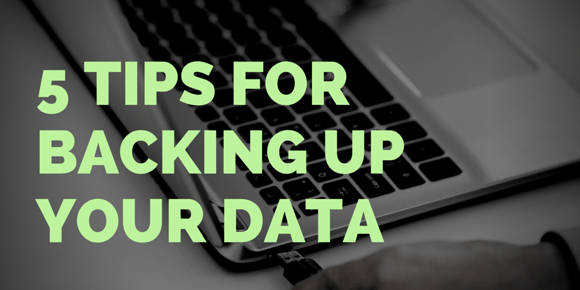In a world where every company’s business is increasingly its own data, it’s always a good idea to ensure that data is backed up. This is especially true in the way it encourages adopting a proactive security mindset, allowing small and mid-sized businesses to address the risk of a cyber attack or security breach before it happens.
As ransomware attacks continue to make headlines, the value of your own data has never been clearer. Though you may not realize it now, you certainly would if you were to log in one day and discover that you can’t access even a single file on your systems without paying hundreds or thousands of dollars to the attackers behind a ransomware virus that had hijacked your computers.

Fortunately, you can use common sense and adopt the key preliminary step of ensuring your data is properly backed up on a regular basis, as well as protecting your backup itself from being infected with a virus or Trojan. Use these tips to get started.
Tip #1: Always Have a Backup Copy of Your Critical Data
For example, if you back up your data every day, then the most you’d risk losing in an attack is a day’s worth of data. The same holds true if you back up every 72 hours, every week, or any other length of time.
By backing up your data, you can ensure that you’ll always be able to “start fresh” and restore your backup copy in the event of a data loss.
Tip #2: Have Backups in Multiple Forms
For example, weekly backups might be suited to being stored in a physical location that’s separate from your company’s facilities. Daily backups — or even realtime backups — might be better suited to cloud storage that’s quick and responsive. However, it’s critical to ensure that your chosen cloud backup provider maintains their own backup processes and cloud security procedures, to prevent your backup data from being lost if they were to suffer a data loss.
Whenever possible, it’s always best to keep one form of backup in the cloud and one form at a variety of physical locations. Separating your backups among different physical locations is especially important if you work in a regulated industry that’s required to protect its data from physical risks like extreme weather events.
Tip #3: Never Connect Backups to Shared Drives
 Tip #4: Utilize Proactive Patching
Tip #4: Utilize Proactive Patching
To operate in the safest environment, it’s crucial to ensure that all your systems are always up to date when it comes to software patches. For that reason, it’s best to activate automated patching on every computer, whether it’s used for backups or not. However, especially when it comes to your backup systems, automated patching is all but mandatory.
This is especially true in recent years, as cybersecurity attackers have grown very adept at exploiting software security risks the moment they’re discovered. In many cases, even the 8 hours it might take for you to leave the office one night and then return the next morning to find a new security patch was available would be enough for your systems to already be compromised. However, with automated patching, your systems would have instantly updated their security software programs as soon as the update became available.
Tip #5: Train Your Team!
For the best results, make sure to run full cybersecurity drills and penetration tests at several points throughout the year. You can simulate the full course of a cybersecurity attack, and ensure that your plans are effective when it comes to monitoring for those attacks, identifying when they happen, then mitigating the attacks and using your data backups to recover and resume normal business.



